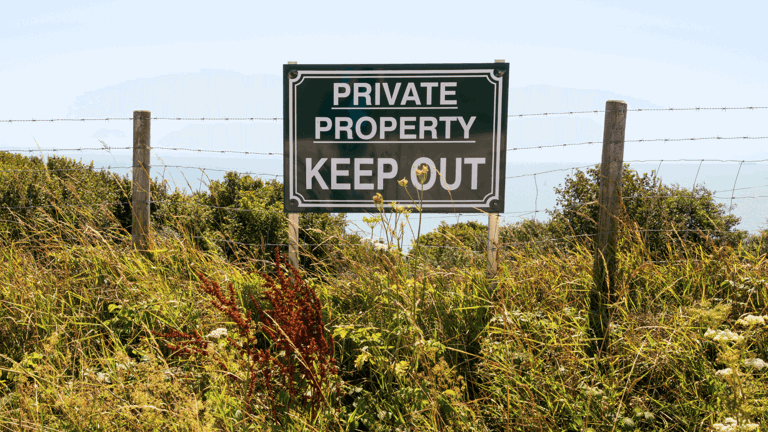The countryside can be idyllic, with great places to visit and explore by ramblers, runners, and dog-walkers alike, however, this can cause problems for farmers and landowners who need to protect their land and livestock, driving many to install a no trespassing sign on their property. But do these signs really help to manage third-party visitors and their rights of access?
What does it mean to trespass?
Before we can understand if no trespassing signs work, it's important we understand when someone is deemed to be trespassing and when trespassing applies.
Trespassing occurs when someone enters or remains on private property without the owner's permission or consent. It can also apply to objects and vehicles e.g. parking a car in an unauthorised area or on private land. Landowners often utilise trespass signs as a means of deterring potential intruders.
Should you consider a trespassing sign?
Trespass signs alert individuals that they are entering private property, and that their presence is unauthorised. These signs typically display messages such as "Private Property" or "No Trespassing" and are strategically placed at entry points or along property boundaries.
Some signs go further and give instructions on how parties need to act or behave e.g. keeping dogs on leads or remaining on designated footpaths.
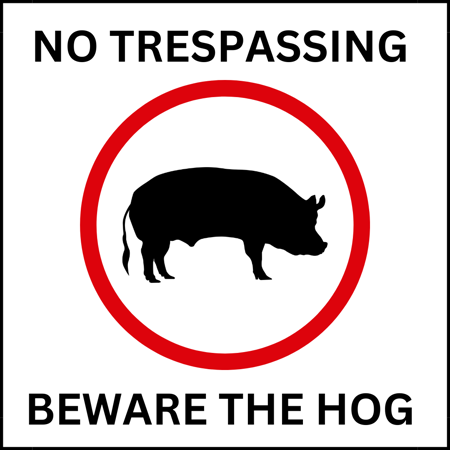
Can you ignore a no trespassing sign?
The presence of a trespass sign does not automatically result in the prosecution of individuals who enter the land without permission.
Trespassing is primarily a civil offence rather than a criminal one. This means that unless there are additional criminal activities involved, such as theft or damage to property, the police are unlikely to take direct action based solely on a trespassing incident as it is difficult to bring a case against the individual.
The effectiveness of trespass signs can vary. In most cases, it depends on the person reading them.
Where should you place a no trespassing sign?
When considering the placement of trespass signs, landowners need to consider:
Clarity
Signs should be easily visible and legible, ensuring that individuals cannot claim ignorance of the land's private status.
Consistency
Signs should be placed at regular intervals along the boundaries to reinforce the message and deter potential intruders.
Durability
Consider using durable materials for the signs to withstand weather conditions and maintain their effectiveness over time.
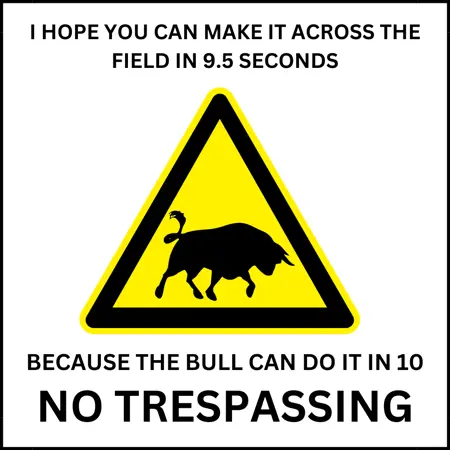
How can a trespass claim be enforced?
A landowner can use 'reasonable force' to encourage a trespasser to leave but not more than is reasonably necessary.
Unless you have reasonable grounds to believe that you may be in danger, physical force or use of weapons is very unlikely to be considered 'reasonable' in the eyes of the law.
To make a legal claim against a trespasser, farmers and land owners need to gather evidence (witness statements, photographs and CCTV) to support their case.
Unless damage to the property can be proven, you are likely to only recover nominal damages by suing for trespass, although you may be able to claim your legal costs if your claim is successful.
Even if a civil or criminal claim is not pursued, the details and evidence gathered will be useful in making an insurance claim if necessary.
If you are a farmer or land owner that is considering making a trespassing claim, you should always consult with a solicitor to discuss the matter and understand the requirements and risks involved in bringing a legal claim.
Public access & right to roam: What does 'open country' mean?
In England and Wales, the public has a right to roam the ‘Open Country’. (otherwise known as open access land). Individuals are allowed to access the Open Country for a variety of activities, which includes walking, running, sightseeing, birdwatching and climbing.
Open Country includes mountains, moors, heaths and downs that can be publicly and privately owned. What constitutes ‘open access land’ is determined by Natural England and Natural Resource Wales.
Land regarded as Open Country is shown on definitive plans that can be searched online. This right of access is not set in stone and there are restrictions on activities such as cycling, horse riding and camping.
The vast majority of farms will contain some form of footpath, bridleway, or byway and as a result, these public rights can pose difficulties for landowners using and managing their land.
Responsibility for maintaining public rights of way is shared between landowners and the highways authority, however, landowners can get into trouble for keeping potentially dangerous animals on or near public rights of way.
Depending on the circumstances landowners can apply for public rights to be ‘stopped up’ or diverted via a different route. Farmers can also restrict access for up to 28 days a year during critical times, such as lambing season, so livestock are not at risk of being disturbed.
Dogs worrying livestock
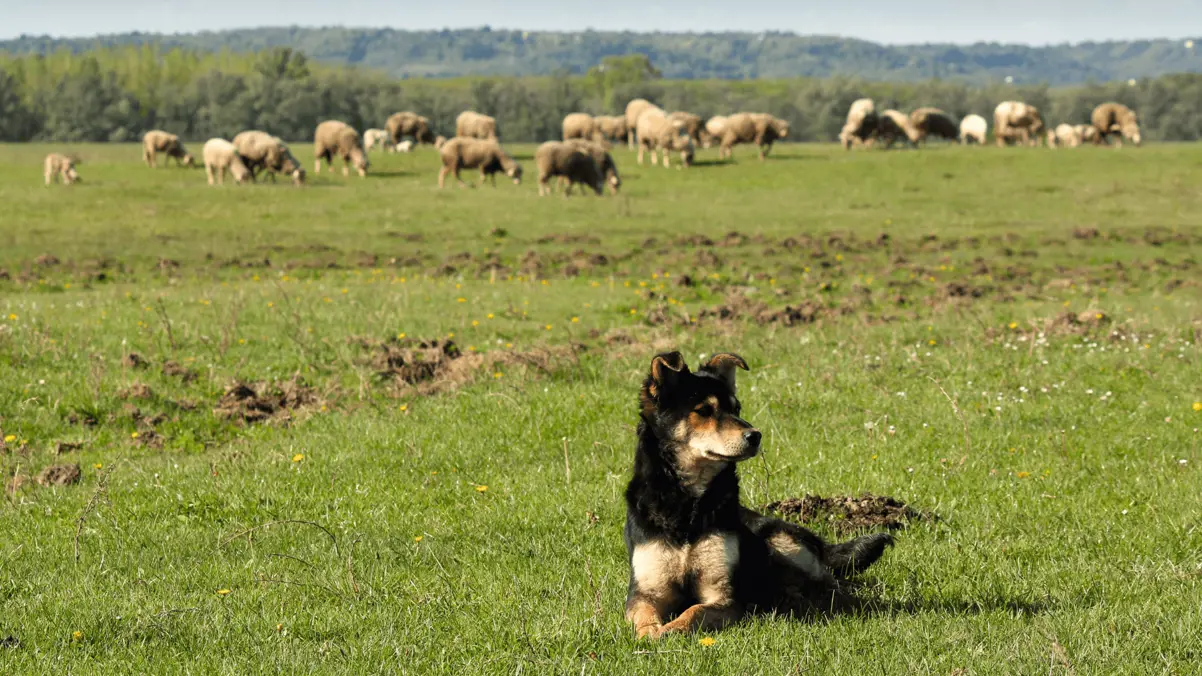
Under the Dogs (Protection of Livestock) Act 1953, the owner or person in charge of a dog which worries livestock commits an offence, which can attract a fine of up to £1,000 plus costs, whilst local councils have the power to impose dog control notices on dog owners if their pet has been involved in previous incidents.
When using Open Access rights, the general rule is that visitors must keep dogs on a short lead (no more than 2 metres) between the months of March and July. In coastal areas, dogs must always be kept on a lead and under control.
In February 2022 Natural England and Natural Resources Wales issued new guidance under the Countryside Code which includes advice on what to do if a dog is worrying farm animals and stresses that shooting a dog should be the last resort.
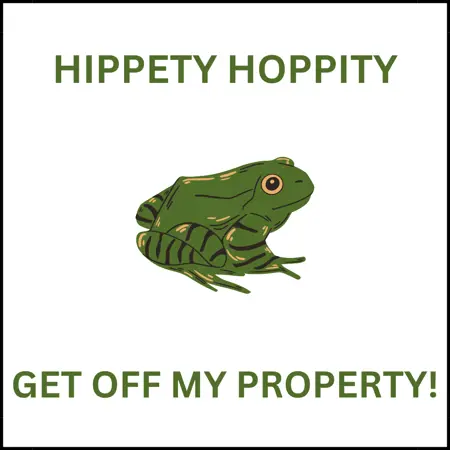
Practical ways to stop trespassing
Installing signs may not be enough to deter trespassers. They are far more effective when used with other measures including the below:
Physical barriers
Erecting fences, gates, or hedges can act as physical barriers, clearly demarcating the boundaries of the property and making it more difficult for trespassers to enter.
Maintenance
You should make sure grass is cut and have accessible gates to identify public footpaths/rights of way will encourage visitors to stick to designated areas. Trespassers when confronted will often say they are lost or didn’t know where they were going.
Lighting and surveillance
Installing motion-activated lights and security cameras can help deter trespassers by increasing the risk of being caught or identified.
Regular inspections
Farmers should regularly inspect their property to identify any potential vulnerabilities in fences, gates, or other access points. Prompt repairs or reinforcement can help maintain the integrity of the boundaries. Being seen as an active presence on the land can also act as a deterrent.
Education
Visitors are not always aware of their responsibilities when moving through the countryside. Signage and notice boards on site can help. Natural England and Natural Resources Wales have run media campaigns on what to do and what you should avoid doing. Some schools and colleges invite farming businesses to discuss the issues involved.
Community engagement
Building positive relationships with neighbours and the local community can create a network of support. Neighbours can keep an eye out for suspicious activity and report it to the farmer or the authorities if necessary.
To discourage trespassers, it is more effective to focus on preventive measures such as securing boundaries, maintaining public access routes and promoting awareness through signage and community engagement.
Trespass signs in isolation are not a magic bullet and bringing legal proceedings can be time-consuming, costly, and uncertain in their outcome.
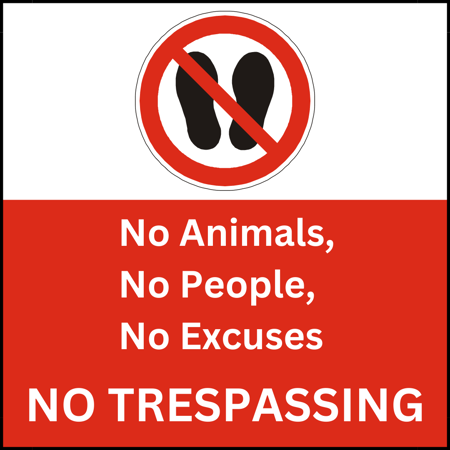
Speak to our property law solicitors
Our real estate team includes solicitors who specialise in agricultural land matters. If you have a trespassing or boundary issue relating to your farm or estate, our team can provide bespoke legal advice to ensure you are well-equipped to move forward.
To speak to our team please complete the form below and one of our agricultural property lawyers will get in touch with you.
Key Contact

Joseph Fletcher-Hunt
Real Estate Partner
Joseph acts for clients on a wide range of real estate and property matters, including sales and purchases of land and buildings, mortgages and refinancing (working for both banks and borrowers), easements and property rights and the granting, renewal and variation of leases and tenancies.


